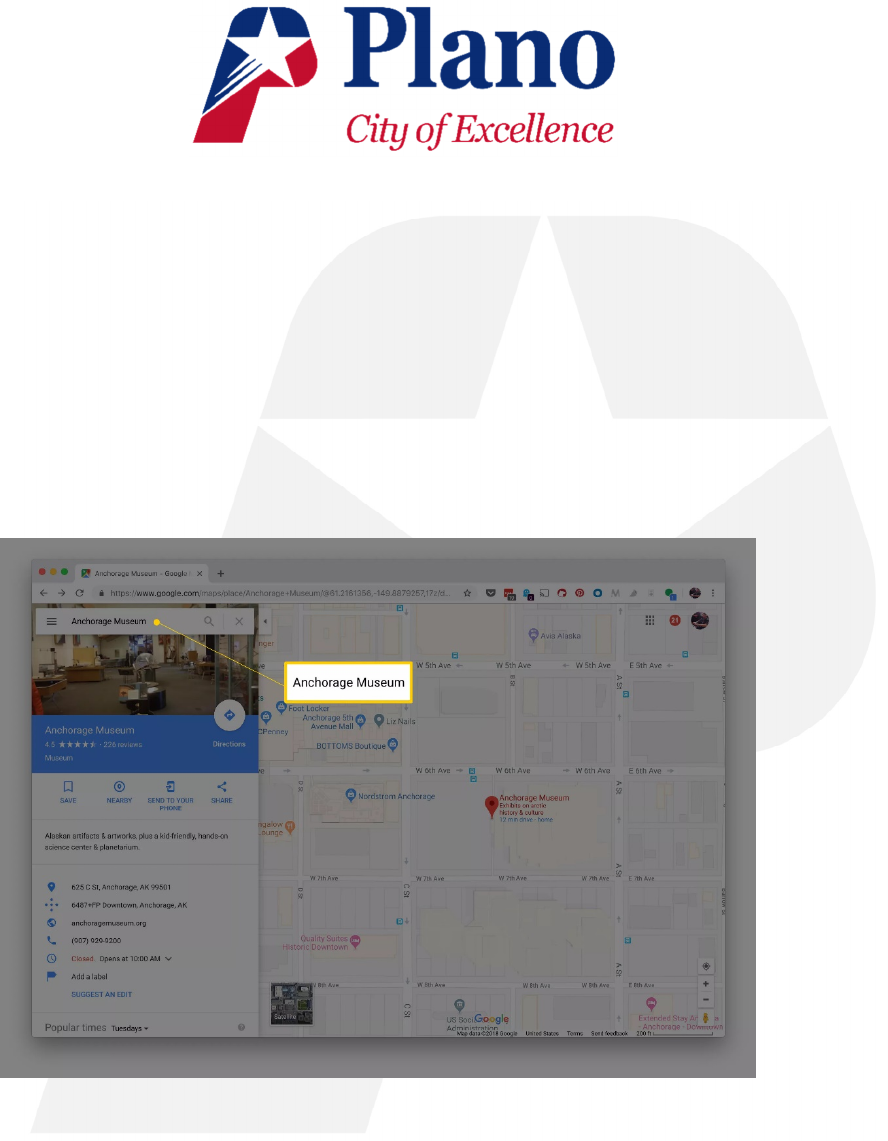
USING GOOGLE MAPS FOR CYCLING DIRECTIONS
HOW TO SELECT A BICYCLE-FRIENDLY ROUTE IN GOOGLE MAPS
Choosing a route for cycling is as easy as picking the Cycling option as the map mode instead
of another option you might be more aware of, like the one for driving or walking.
1. Pick a starting location. Do this by entering a location into the search box or right-clicking
somewhere on the map and choosing the Directions from here option.
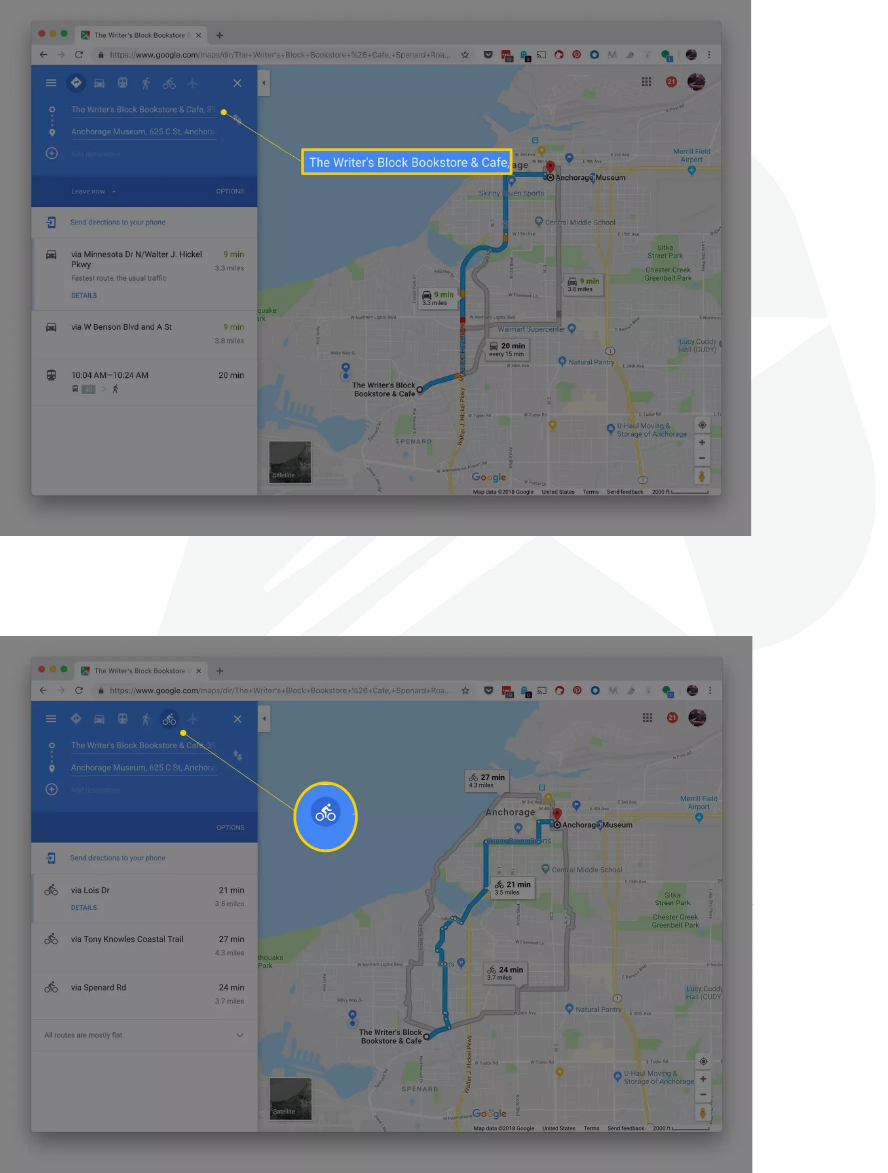
2. Do the same for the destination, picking Directions to here through the right-click menu
or typing an address into the destination box.
3. Select Cycling as your mode of transportation from the icons at the top of the screen,
and if you have the option to do so, click Directions to find a suitable path.
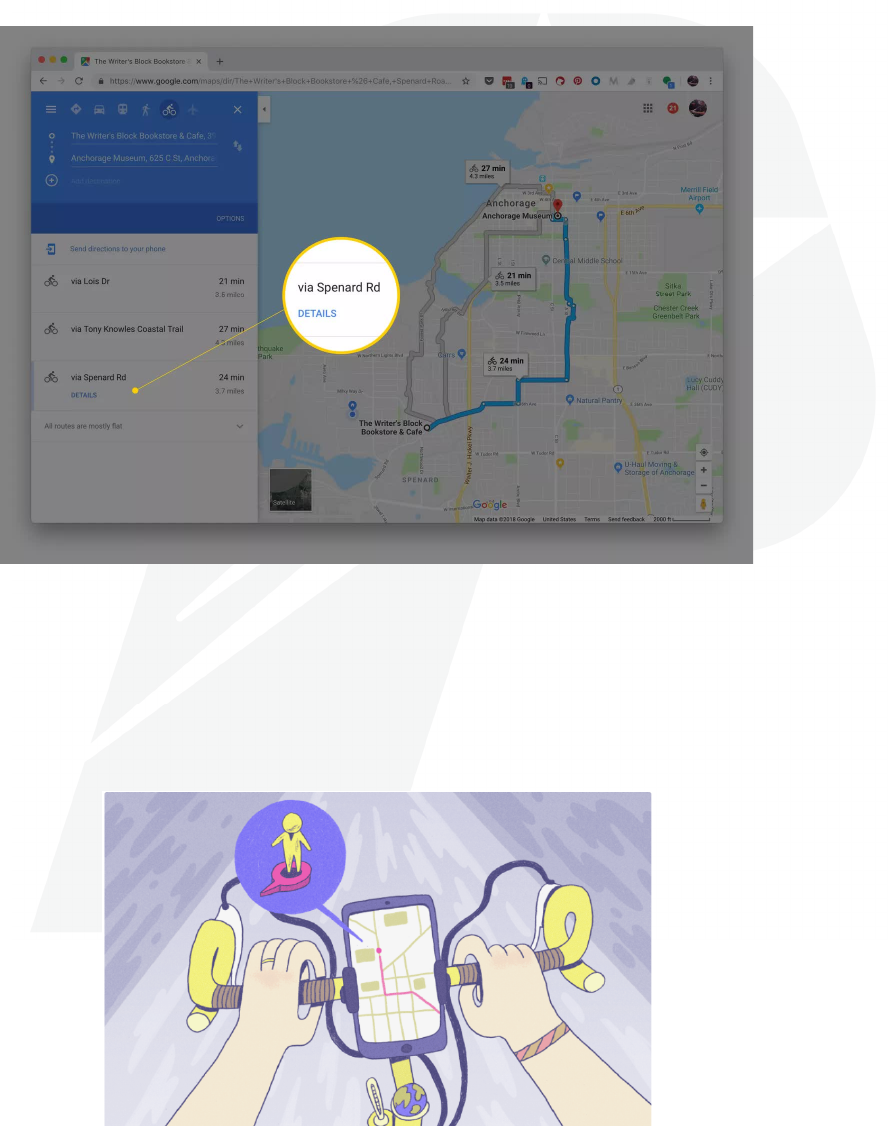
4. Take note on what the map presents to you. The Google bike route map and any
suggested alternative routes give a set of directions to avoid divided highways and roads
that do not permit bicyclists.
5. To choose an alternate route, select the one from the map that you'd rather use. The
route(s) include the distance and estimated cycling time. In the destination panel is a
comment on whether the route is flat.
6. After you choose the bike route, use the Send directions to your phone link in the
destination panel to send the directions to your phone for turn-by-turn directions as you
travel or use the DETAILS button in the left pane to find the print option if you want to
print out the directions.
This approach gives you a bicycle-friendly route, but for detailed information on routes
that are available for cyclists, Google Maps also provides a specialized map.
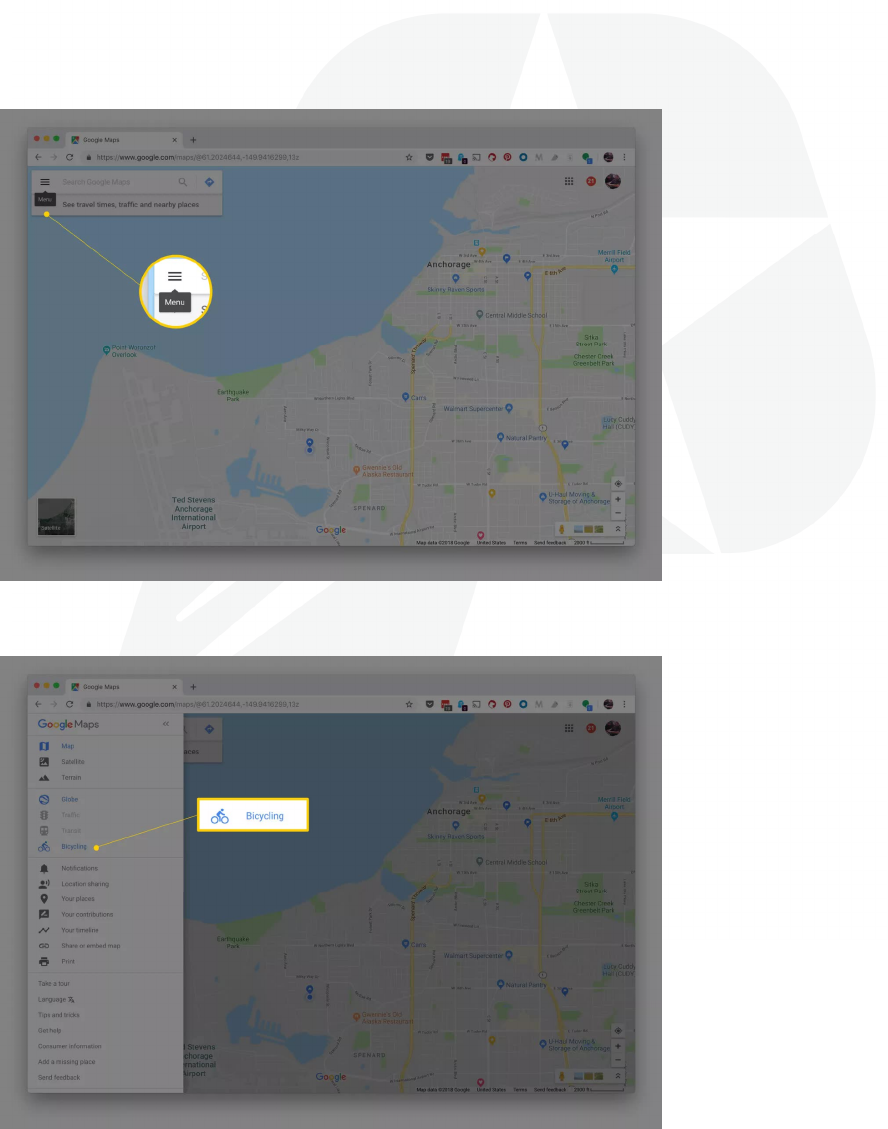
HOW TO VIEW BICYCLE-FRIENDLY ROADS AND PATHS IN GOOGLE MAPS
Google Maps offers specialized maps just for cyclists. When you use this kind of map, you
see several features not available in the regular Google Maps view. It's especially handy for
locating bike lanes and trails you weren't aware of in your neighborhood.
1. Begin with Google Maps open and with nothing entered into the search field.
2. Open the menu button at the top left corner of Google Maps, just to the left of the empty
search box.
3. Choose Bicycling from that menu to turn on the layer specifically for cyclists.
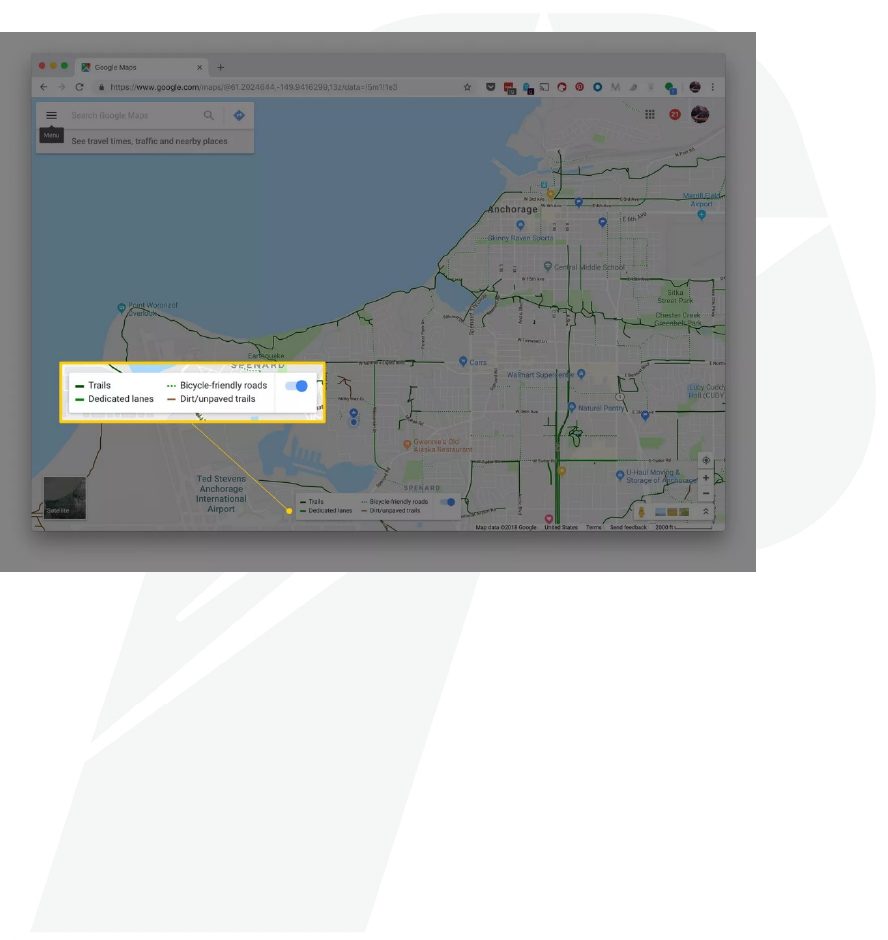
Here's how to read this bicycle map:
• Bike trails are indicated by dark green lines and do not permit motor vehicles.
• Streets with dedicated bike lanes are indicated by light green lines.
• Bicycle-friendly roads without dedicated lanes are indicated by dashed light green
lines.
• Dirt or unpaved trails are indicated by brown lines.
You may need to enlarge the map (zoom back/out) to see the bike path indicators after the
route is marked with the thick blue line.
4. If you want to see bicycling directions using this map view, return to the steps listed in
the first section.
You may be offered several suggested bike routes. You can drag-and-drop the route line to
avoid an area or to include a more scenic or pleasant option based on your experience. From
there, choose the route as usual, confident that you have a bike-friendly path identified.
BIKE ROUTE PLANNER IN THE GOOGLE MAPS APP
Routes customized for cyclists are also available on the Google Maps mobile app on Android
and iOS.
To get there, enter a destination, tap the Directions option, and then choose the bicycle icon at
the top to switch away from the other travel modes.
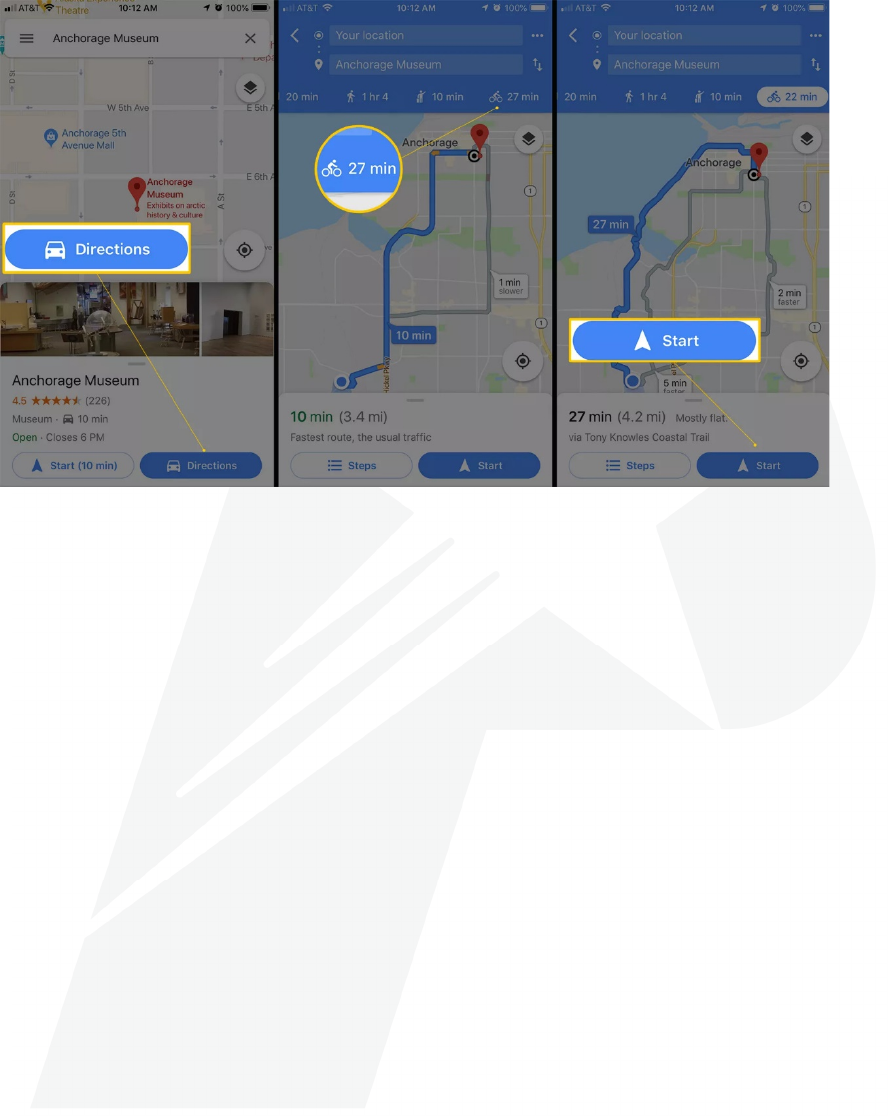
THINGS TO CONSIDER
Plano encourages all cyclists to plan routes tailored to their skill-level and only those with which
they can handle. Therefore, please remember when preparing your bike route with Google
Maps that it works much like it does when setting up driving routes: Google Maps may present
you with the quickest route but not necessarily the best route for you.
Maybe you want a quiet route for your bike ride, or one that's more scenic but not necessarily
the fastest. Keep this in mind when preparing a bicycle route with Google Maps because you
may end up needing to do some more digging to customize the route that suits you.
The idea here is to look closely at the Google Maps suggestions for your cycling route.
Personalize the route for you and how you want to reach your destination. Also, think about
where you can park your bike. Google Maps does not include that information.
